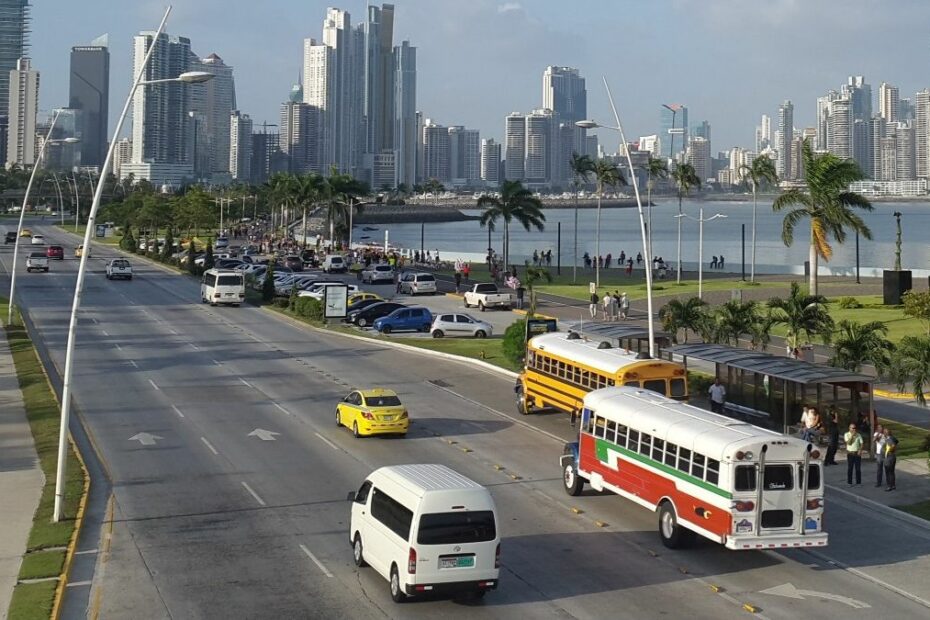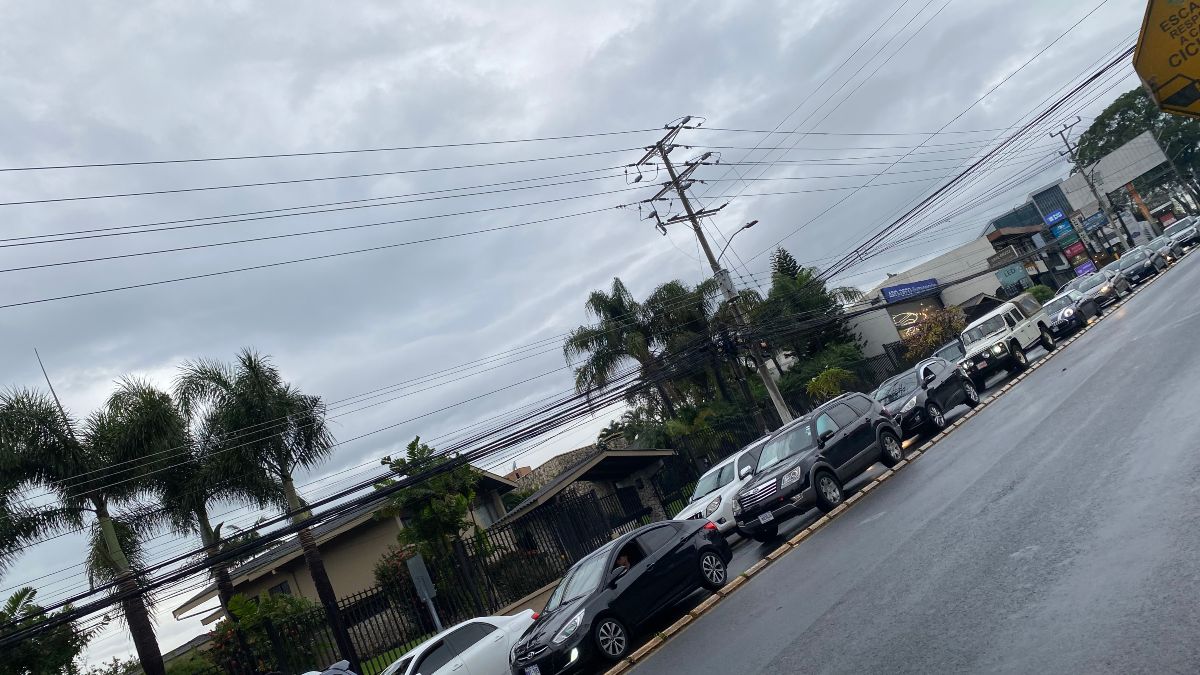Knowing how the cabs work can make life easier in any city, even in the age of Uber and Lyft. And the taxis in Panama City, Panama are no exception. Learn how to navigate Panama’s cab culture like a pro.
When first arriving in Panama, once released from immigration control, the first of many taxis became our key to getting around Panama City.
The helpful, English-speaking airport staff helped usher us to the taxi rank and quoted a price. Tired and loaded with luggage, I was happy to drop $40 on a ride into town feeling I had no other choice. Late at night, with a wife wanting a shower and two young children in tow – the last thing I was going to do was haggle. This was the most expensive ride I would take here and I didn’t care!
I’d heard the taxis in Panama City were cheap and easy. Over the course of those first days, we’d walk out of our apartment and jump into a passing cab. It would cost only a couple of dollars to get anywhere. You can get to any destination in Panama City for $1 to $5, with a few exceptions.
View this post on Instagram
The yellow taxis that flow through the streets are easy to find.
As an obvious gringo, you can’t walk down the street without taxis slowing down and honking you as they pass, to alert you they’re available for hire. Which is frustrating if you’re trying to cross the road. The for-hire lights being on or off don’t seem to mean much. It’s all about the honking.
You can tell the licensed yellow cabs by the numbers on the side. But once inside, there are no identifiers of any kind, nor are there meters. Unless you negotiate a price before setting off, the driver will throw a figure at you at the end of your ride. This figure will be anything from embarrassingly cheap to a price that you might feel reasonable, but is actually inflated.
For the first month or so, we jumped in and out of many of these yellow cabs. Our experiences made us somewhat expert on the matter.
View this post on Instagram
First, don’t judge the taxi by its looks.
It may have beaten bodywork and a cracked window. It may have things dangling from the rearview mirror. The music may be so loud that your ears bleed. There may be stickers all over the windshield. He may drive in a way that seems erratic. This is all normal – he knows what he’s doing.
The most worrying-looking taxis have often been the most honest in my experience. Often driven by poor Colombian or Venezuelans immigrants sending money home to their family.
Some drivers are friendly and chatty. Others are silent and edgy. Some speak English. Many don’t. They’ll often give you their number for future rides or tours. Whatever they are, the outcome will be the same. Either a fair price or an over-inflated one, and all options in-between. I have been overcharged by the nice guy, robbed by the silent guy, or treated fairly by both.
View this post on Instagram
Yellow Taxi Guidelines:
- Never take a taxi from outside a hotel or mall. They will always be twice the price as the location takes a cut. As soon as you walk out of these places, employees are there to decant you into a cab at extra expense. You are a commodity they are passing on. Instead, walk onto the street and grab a passing ride.
- Negotiate the price before driving off – remember, there’s no meter. If you do take a $4 ride and they ask for $10 at the end, laugh and say, “It costs me $4 every day – look, here’s $5”. They’ll take it, having tried, and anyway it’s your bad not having set the price before you left.
- Because I was once robbed by a taxi driver – I now take a quick photo of their license number before getting in.
- Tipping is not expected for taxi rides. Coming from a country where the meter reads $3.50 as soon as you get in a cab, it feels weird to pay $1.50 for a trip. Round it up and throw an extra buck in if you feel like it but don’t feel guilty.
- If you don’t speak Spanish, have a piece of paper with the destination address written on it. Or a basic, hand-drawn map. Not only do they not use meters – they often don’t use GPS either. Don’t use your phone map, they often can’t read it well, and it also shows off how expensive your phone is. That makes you a potential robbery target.
- Learn the Spanish words for: ‘Left’, ‘Right’, ‘Straight ahead’, ‘Stop here’, and also, ‘You have to be kidding! That’s not what it cost me yesterday!’
We use Uber much more than taxis in Panama City, nowadays.
The prices are set and always cheaper with Uber. It avoids all the haggling, and best of all you know who your driver is. There are Uber drivers all over Panama City within minutes from you’re at. The drivers and cars they have provided have been bigger, safer, and more professional.
In an Uber, we can relax and not have to deal with cash. And best of all, we don’t have to explain where we want to go. It’s already mapped out on their phones from my online booking. You can order the type of car you want, and even pay a little extra to have an English-speaking driver if you can wait a few more minutes.
Having said that, the yellow cabs also have Uber-style apps for their clients to compete and be more user-friendly. Apps like Taxi Usuario (available through Google Play), for example.
Now we’ve been here for a while, enjoying most of the yellow taxi rides, prices, and the conversations we have had with local drivers, I actually feel more ripped off back home.




